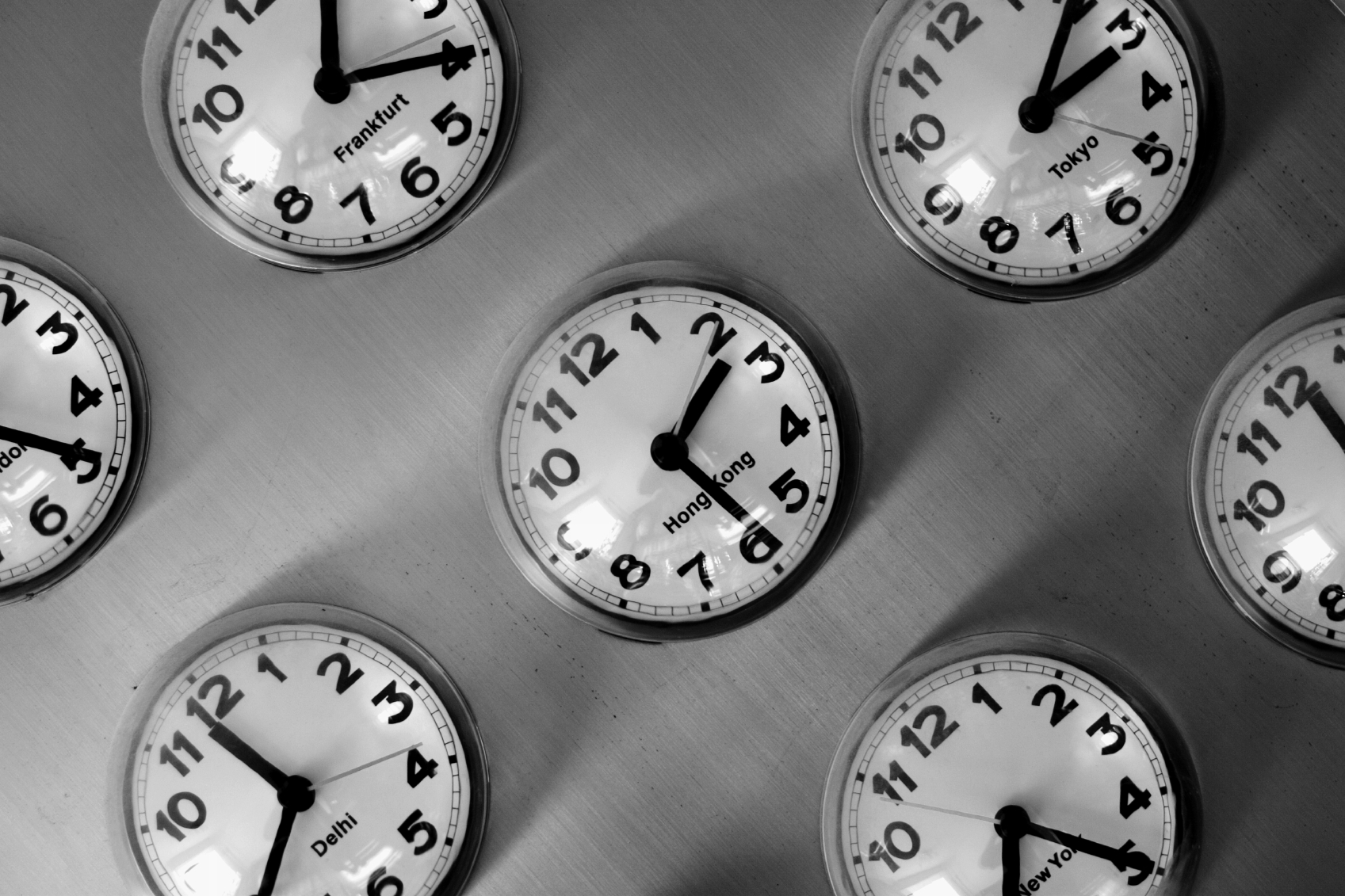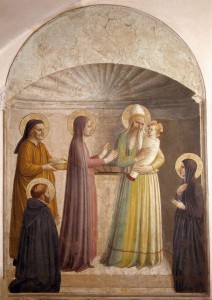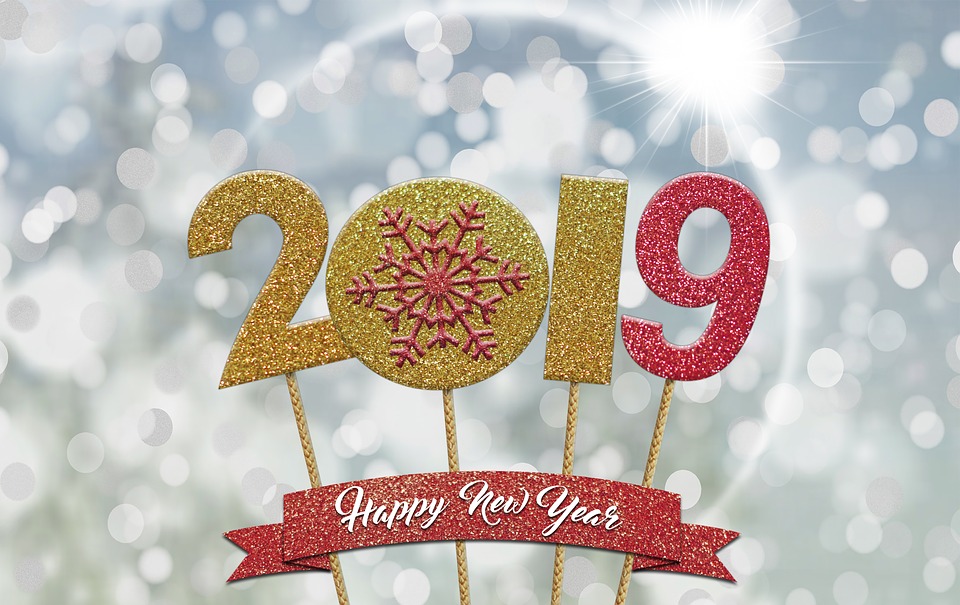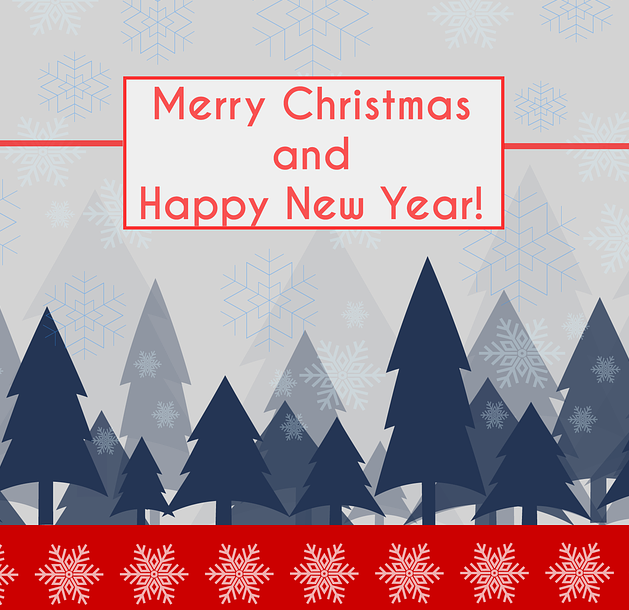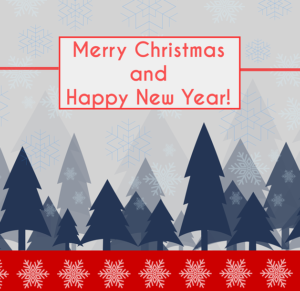The feast day of January 1st is a very complex tapestry, both culturally and liturgically. Perhaps we can use the second reading by St. Paul to the Galatians as a way to weave through some of the many details. We can look at it in three parts.
I. The chronology of our celebration– The text from St. Paul’s letter to the Galatians says, When the fullness of time had come …
Most people are going about today saying, “Happy New Year!” And rightfully so, for it is the beginning of a new year; but most people think of New Year’s Day in almost wholly secular terms. Sadly, it is best known as an occasion for loud parties and excessive drinking.
It is a mistake to view New Year’s Day simply as a secular holiday. In speaking of “the fullness of time,” St. Paul reminds us that all time and all ages belong to God.
It is not simply 2023; it is 2023 Anno Domini (A.D.). Even the most unbelieving of people in the Western world denote their place in time in relation to Jesus Christ. It is 2023 years since the birth of Christ. Every time we write the date on a check or at the top of a letter, every time we see it at the top of the newspaper or on our computer screen, that number, 2023, points back to Christ. He is the Lord of history. Jesus sets the date; He is the clock by which we measure. All time belongs to Him.
Jesus says in the book of Revelation, I am the Alpha and the Omega, the first and the last, The beginning and the end. He who is, and who was, and who is to come (Rev 22:13).
If it is true that 2023 references the birth of Christ, then why is Christmas Day not also New Year’s Day? The fact that it is not actually makes a lot of sense if we understand liturgical and spiritual sensibilities.
In the Church and stretching back into ancient Jewish times, it was customary to celebrate the high feasts of faith over the period of a week. In Christian tradition this came to be known as the “octave.” Although we think of a week as comprising seven days, consider that we celebrated Christmas this past Sunday and now this week we celebrate New Year’s Day on Sunday; Sunday to Sunday, inclusive, is eight days.
Tuesday, January 1, 2023 is the eighth day of Christmas. In the Christian tradition, the octave is considered as one long “day” that lasts for eight days. Therefore, Tuesday, January 1, 2023 completes Christmas day; it is fulfilled. Or, as St. Paul says, the “fullness of time” in terms of Christmas day has come. At the end of this eight-day Christmas day, our calendar flips from 2022 to 2023 A.D.
The rest of the secular world has largely moved on already, barely thinking of Christmas anymore. As I walk in my neighborhood, I see Christmas trees already set out at the curb waiting to be picked up by the recycling trucks. Yes, for many in our hurried world, Christmas is over. We in the Church, however, continue to celebrate the great Christmas feast and cycle. Having completed the octave, we move on to Epiphany week.
This New Year’s Day we contemplate the “fullness of time.” The passage of another year reminds us of the magnificent truth that to God all time—past, present, and future—is equally present. He holds all things together in Himself. He is the same yesterday, today, tomorrow, and forever. Whenever He acts, He acts in our time, out of the fullness of time. This is a very deep mystery and we should ponder in silence the mystery that for God, all things are. He is not waiting for things to happen. For Him, everything is accomplished.
II. The content of our celebration – St. Paul goes on to say, God sent forth his son born of a woman. This statement again reminds that we are still in the Christmas cycle.
While it is New Year’s Day, there is also a complex tapestry of religious meanings to this day as well. It is still Christmas day, the eighth day of the one long day that we call Christmas.
Historically, this is also the day of Christ’s circumcision. For a long period in Church history, today was the feast of “The Circumcision of the Lord.” As I have written previously, I regret the loss of this feast, at least in terms of its title.
Today is the day when Joseph and Mary brought Christ to be circumcised. In this, Jesus as man and as God reverences the covenant He has made with His people. It is a beautiful truth that God seeks relationship with His people. In this covenantal act of the circumcision is the moving truth that Jesus is not ashamed to call us His brothers (Heb 2:11).
There is the first shedding of Jesus’ blood. It is also a sign of His love for us.
This feast day also celebrates the Most Holy Name of Jesus, for not only was a Jewish boy circumcised on the eighth day, but he was also given his name; all heard that name for the first time on that day.
The name Jesus means “God saves.” Indeed, this Most Holy Name of Jesus, when used in reverence, has saving power. We are baptized in His Holy Name along with that of the Father and the Holy Spirit, and all of our prayers conclude with His Holy Name. Scripture says this of His great and holy name:
Therefore, God exalted him to the highest place and gave him the name that is above every name, that at the name of Jesus every knee should bow, in heaven and on earth and under the earth, and every tongue acknowledge that Jesus Christ is Lord, to the glory of God the Father (Phil 2: 9-11).
Yet another meaning of today’s feast day is shown in its current, formal title: “The Solemnity of Mary, Mother of God.” This replaced the title of “The Feast of the Circumcision of the Lord” in 1970. However, it is the most ancient title for this feast day. Again, you may read more on this topic in a previous blog post.
We note in the second reading that St. Paul says that God sent forth his Son, born of a woman. Jesus is the eternal Son of the Father; He is God from God, Light from Light, True God from True God. Jesus is God, and because Mary gave birth to Him, she is the Mother of God because Jesus is not two different persons.
Mary did not just give birth to part of Jesus, she gave birth to Jesus. Thus, the title “Mother of God” speaks to us as much about Jesus as it does about Mary. She has that title because of the Church’s insistence that Jesus cannot be divided up into two different people. We cannot say that Mary gave birth to one Jesus but not to “the other one.” Although He has two natures, human and divine, there is only one Jesus.
Thus, on this feast of Christmas, on this eighth day of Christmas, we are reminded and solemnly taught that Jesus is both human and divine. In taking a human nature to Himself from His mother Mary, He remains one person. God has sent forth his son, born of woman.
III. The consolation of our celebration– St. Paul goes on to say, Born under the law to ransom those under the law so that we might receive adoption as sons. As proof that you are sons, God sent the Spirit of his Son in our hearts crying out Abba, Father! So you are no longer a slave, but a son, and, if a son, also an heir through God. Note three things about this passage:
Our Adoption– We have already noted that on the eighth day Jesus is circumcised and enters into the Covenant, into the Law. In the Incarnation, He joins the human family; in the Covenant, He joins our family of faith. He will fulfill the old Covenant and inaugurate the new one. By this New Covenant, by baptism into Him, we become members of His Body and are thereby adopted as sons.
We become sons in the Son. When God the Father looks at His Son, loving Him, He is also looking at us and loving us, for we are in Christ Jesus, members of His Body through baptism. God is now our Father, not in an allegorical sense, but in a very real sense. We are in Jesus and therefore God really is our Father.
Our Acclamation– St. Paul says that the proof of our sonship is the movement of the Holy Spirit in us that cries out Abba! In Aramaic and Hebrew, Abba is the family term for father. It is not baby talk, like “Dada.” However, just as most adults call their father “Dad” or some other endearment rather than the more formal “Father,” so Abba is used in a similar way. It would be quite a daring thing for us to call God “Dad” unless we were permitted to do so and instructed to do so by Christ.
St. Paul speaks of this word, Abba, as proof that we are sons. In so doing, he emphasizes that it is not merely the saying of the word that he refers to. Even a parrot can be taught to say the word. Rather, St. Paul is referring to what the word represents: an inner movement of the Holy Spirit wherein we experience a deep affection for God the Father. By our adoption, our baptism into Christ, by our reception of the Holy Spirit, we love the Father! We develop a deep affection for Him and dread offending Him. By this gift of the Spirit, God is our Father, whom we deeply love!
Our Advancement– Notice that St. Paul then speaks of how we have moved from being slaves to being sons, heirs. In Jesus, we are not just any son; we are the only Son of the Father. As Jesus has a kingdom from His Father, so do we as we too inherit it with Him. As sons in the Son, we are heirs with Jesus to the Kingdom! Jesus speaks of His disciples as reigning with Him one day: And I confer on you a kingdom, just as my Father conferred one on me (Lk 22:29). In Jesus, all Heaven will be ours and we will reign with Him forever. This is not our doing, not our glory; it is Christ’s doing and His glory in which we share.
Thus we have a very rich tapestry on this New Year’s Day, this feast of the Octave of Christmas, this Feast of the Circumcision of the Lord, this Feast of the Most Holy Name of Jesus, this Feast of Mary, Mother of God. We are given this feast wherein the glory of Christ is held before us and we who are members of His Body are told of the gifts that we receive by His holy incarnation and His passion, death, and resurrection.
It’s not a bad way to start the new year: being reminded of God’s incredible love for us and of His rich blessings and promises.


